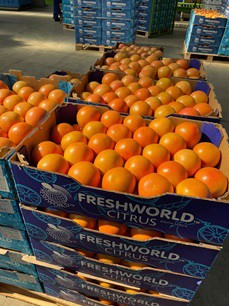 The South African grapefruit industry is strictly coordinating its exports, continuing what they started last year. After disastrous grapefruit campaigns in 2021 and 2022 when oversupplies far overshot demand, coupled with exorbitant freight costs, it wasn't difficult to persuade producers to collectively plan their grapefruit campaigns, remarks Tommie Landman, chair of the Landman Group in Hoedspruit (Limpopo Province) who heads up the effort.
The South African grapefruit industry is strictly coordinating its exports, continuing what they started last year. After disastrous grapefruit campaigns in 2021 and 2022 when oversupplies far overshot demand, coupled with exorbitant freight costs, it wasn't difficult to persuade producers to collectively plan their grapefruit campaigns, remarks Tommie Landman, chair of the Landman Group in Hoedspruit (Limpopo Province) who heads up the effort.
The grapefruit estimate has been reduced by a million 17kg cartons to almost 13.85 million cartons, but his gut feeling, after forty years of growing Star Ruby grapefruit, is that once the downward adjustments start, they often continue through the season. The estimate is, at this stage, still 4% higher than last year's export figure.
These are the peak weeks for South African grapefruit, between weeks 16 and 22, but the aim is to stretch the season; in 2023 they managed to market grapefruit for 26 weeks as a result of voluntary coordination efforts and the realization that Star Ruby fruit can hang for longer than traditionally assumed. The resistance levels for each market during each week have been assessed, and exports remain below these levels. (Of the white Marsh grapefruit an estimated 510,700 17kg cartons are expected this year which exporters can market as they wish.)
High fruit set resulted in smaller sizing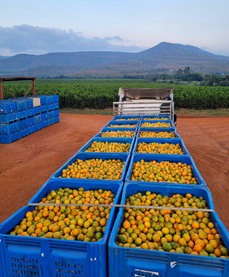 "Grapefruit is extremely sensitive to oversupply because worldwide consumption is not increasing," Landman notes. "During our difficult peak weeks, we look to remove class 2 fruit as well as to limit counts 55 and smaller. When the grapefruit harvest started this year, we quickly noticed that there were a lot of count 55s, so we're watching that carefully and keeping it between 5% and 10% of weekly exports."
"Grapefruit is extremely sensitive to oversupply because worldwide consumption is not increasing," Landman notes. "During our difficult peak weeks, we look to remove class 2 fruit as well as to limit counts 55 and smaller. When the grapefruit harvest started this year, we quickly noticed that there were a lot of count 55s, so we're watching that carefully and keeping it between 5% and 10% of weekly exports."
Right: At the moment, Leanri mandarins are harvested on their farm in Ohrigstad, whose cooler winter temperatures suit the cultivar well.
Fortunately, domestic grapefruit juice prices are fairly good and assist in keeping PP fruit out of the export chain, while probably reducing local fresh supply as well.
During Landman's four decades in citrus, the grapefruit market has undergone a huge change from the days when South Africa and Florida together kept Japan supplied with grapefruit all through the year. In the intervening years, Asian greening disease of huanglongbing (HLB) ruined the Floridian industry.
"We had a tremendous market in Japan, but Florida's absence had a very bad effect on us. The continuity of grapefruit on shelf space just disappeared," he explains. Today, Japan takes the third-highest volumes of South Africa's grapefruit.
So far this season, around 40% of grapefruit have gone to Rotterdam, with a balance to Italy (which, together with Taiwan, is a valuable market for smaller sizes) as well as Germany in tenth place among grapefruit buyers.

Chinese grapefruit use unlike any other
"At the moment we're sending a lot of Star Ruby to China, just below a million cartons so far this year. It's still far below the volumes that go to Europe."
China is an interesting market, he observes, and quite the opposite to the rest of the world: grapefruit is predominantly used in tea shops, not for fresh consumption.
"In 2022, due to the lack of coordination among grapefruit producers, the Chinese market was totally oversupplied. As a result, when we started marketing in 2023 there were still such high levels of processed stock left over from the previous season, that we decided not to supply China with grapefruit at all last year."
To avoid a repeat of this scenario, two South African delegations have visited China to learn firsthand how to serve this market, currently second-largest recipient of South African grapefruit.
This season just over 196,000 cartons (17kg) have made it to South Korea, the most profitable market for a South African grapefruit – if it can get there: the phytosanitary inspections are exceedingly strict and rejections are not uncommon.
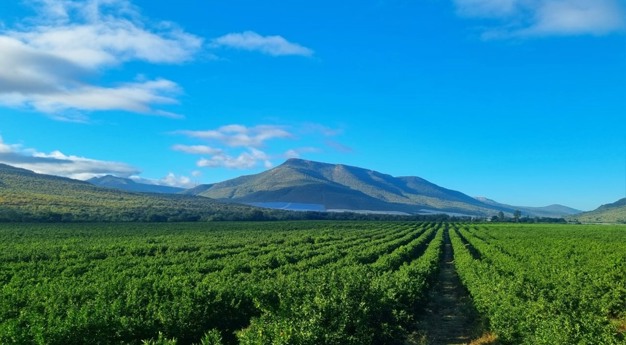
Leanri mandarin orchards on the farm Kleiland in Ohrigstad, Limpopo Province.
Orange juice prices "highest I've ever experienced"
In Hoedspruit, temperatures rarely dip below 8°C, hugely conducive to subtropical fruit production.
"We're Valencia people," he says, and they're looking forward to the start of the season: the orange juice price is the highest he has ever experienced it, he says, and once again HLB (this time in Brazil) plays a role, causing a worldwide shortage in orange juice concentrate.
The Valencia crop cycle follows a more even pattern than grapefruit which is prone to alternate bearing (though, he remarks, not to the degree that mangoes are) and the harvest will start around week 24.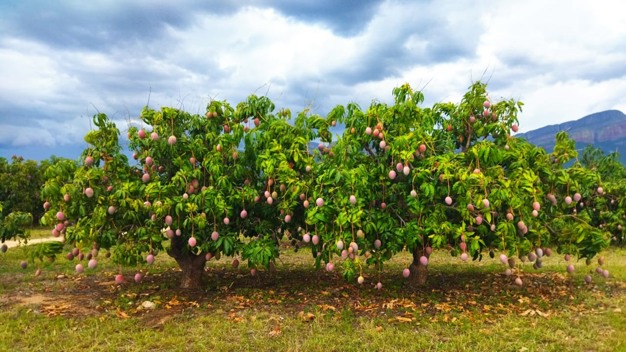
Mango lovers also know the Landman Group for their mangoes. A large portion of their mango crop is dried and competition with West Africa is fierce, compounded by the product's long shelf life.
Fresh mango exports are, alas, complicated by the harbours' operational problems and its extreme perishability. Fortunately, he notes, the fresh cut airfreight market has been a very attractive alternative for them on their mangoes, especially in the United Kingdom.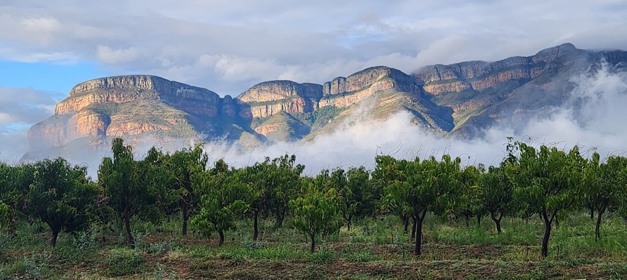
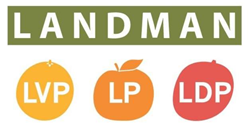 For more information:
For more information:
Tommie Landman
The Landman Group
Tel: +27 64 860 3518
Email: [email protected]
https://www.linkedin.com/company/landman-group/
